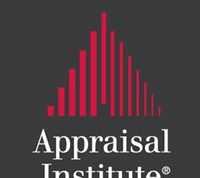4 Home Renovation Safety Hazards & How to Avoid Them
Home renovation can be an exciting time to make improvements to your house, but it also comes with certain risks. A modern house is a large, complex edifice, complete with utilities that make our lives easier but also pose safety hazards.
In order to stay safe during your remodel or home renovation, here are 4 safety hazards you’ll want to avoid, and a little information about how to avoid them.
1). Gas Line Leaks
Gas line leaks are one of those things you’ll want to watch out for in general. That’s right: a gas line may develop a leak even if you aren’t poking around anywhere near it. This is one of those problems which can develop over time.
You’re probably aware of this, but leaking natural gas is a tremendous health hazard: it can lead to suffocation by carbon monoxide if you breathe too much, and explosions and fire are a risk for your house.
Fortunately, there’s a telltale cue: natural gas is always sold with a sulfur compound, one which produces a notorious rotten egg smell whenever it comes into contact with oxygen. So, if you smell a strong rotten eggs scent, immediately alert your service provider to come and turn off the gas.
Once the gas is off, call a professional gasline repair service, also sometimes referred to as gasline plumbing. This is not one of those things that you want to do yourself: hire a professional, and put safety first in your renovations.
2). Lead Paint: The Persistent Hazard
Lead paint is notorious as a neurotoxin, one which has particularly devastating consequences for children. If your home was built prior to 1978, you should have received and signed a lead paint disclosure when you bought it.
Assuming your home is well-kept and has had plenty of fresh paint since 1978, the risk of lead exposure may be slight or non-existent. However, this isn’t usually the issue: more commonly, people who are renovating older houses unleash quantities of lead when they tear out walls, cabinetry, or tiling during a renovation project.
When you’re doing a renovation project in a home that may have lead paint, wear a mask to protect yourself. If you’re looking at a larger project, for example removing a wall, it is a good idea to get in touch with an indoor environmental expert who will be able to take samples and ascertain if lead is present.
3). Asbestos
Asbestos is in some ways a similar kind of threat to lead: it may be present in building materials, including insulation, ceilings, wallboard, cement, and numerous other materials. It was popular because it was a remarkably versatile building material: fire-resistant, sound-abating, and very strong.
The main health risk associated with asbestos exposure is mesothelioma, a cancer that develops as a consequence of long exposure to asbestos fibers by way of inhaling them.
While lead paint is a potential threat in homes up to 1978, with asbestos the hazard extends to 1990. A bit of good news, though, is that in most cases the health risk should not be immediate. As with lead, asbestos is more likely to be an issue if you disturb a significant quantity of it during a renovation project.
If you suspect that an area of your house contains asbestos, the best thing to do is to contact a licensed contractor rather than attempting to do anything about it yourself. The professional can test the material, and if the test comes back positive, safely remove and dispose of it.
Crucially, it is important to ensure that asbestos-bearing materials are not turned into airborne dust, as this increases the health hazard from inhalation: avoid using a drill on these materials, or sanding them, or sawing them.
4). Mold Can Proliferate Without Ventilation
Mold and mildew are most commonly threats that menace the bathroom, where humidity is typically an issue and where ventilation is often inadequate. The practical reality is that many bathrooms become laboratories for the growing of mold and mildew.
Mold and mildew can pose health hazards, especially if they become very proliferate. Most of the time, they ought to be reasonably easy to take care of with spray, though it is probably a good idea to wear face protection for more advanced cases. In very severe cases, it may be necessary to obtain the services of a professional.
The best way to fight mold and mildew is by depriving them of the moisture they need to survive. Install large, capable fans in your bathroom, and you will be less prone to mild and mildew problems.
Conclusion
Home renovation can be an opportunity to make your home more livable and pleasant, and perhaps safer as well. Be cognizant of the 4 hazards we have discussed here, and your renovation should be safer for it.














